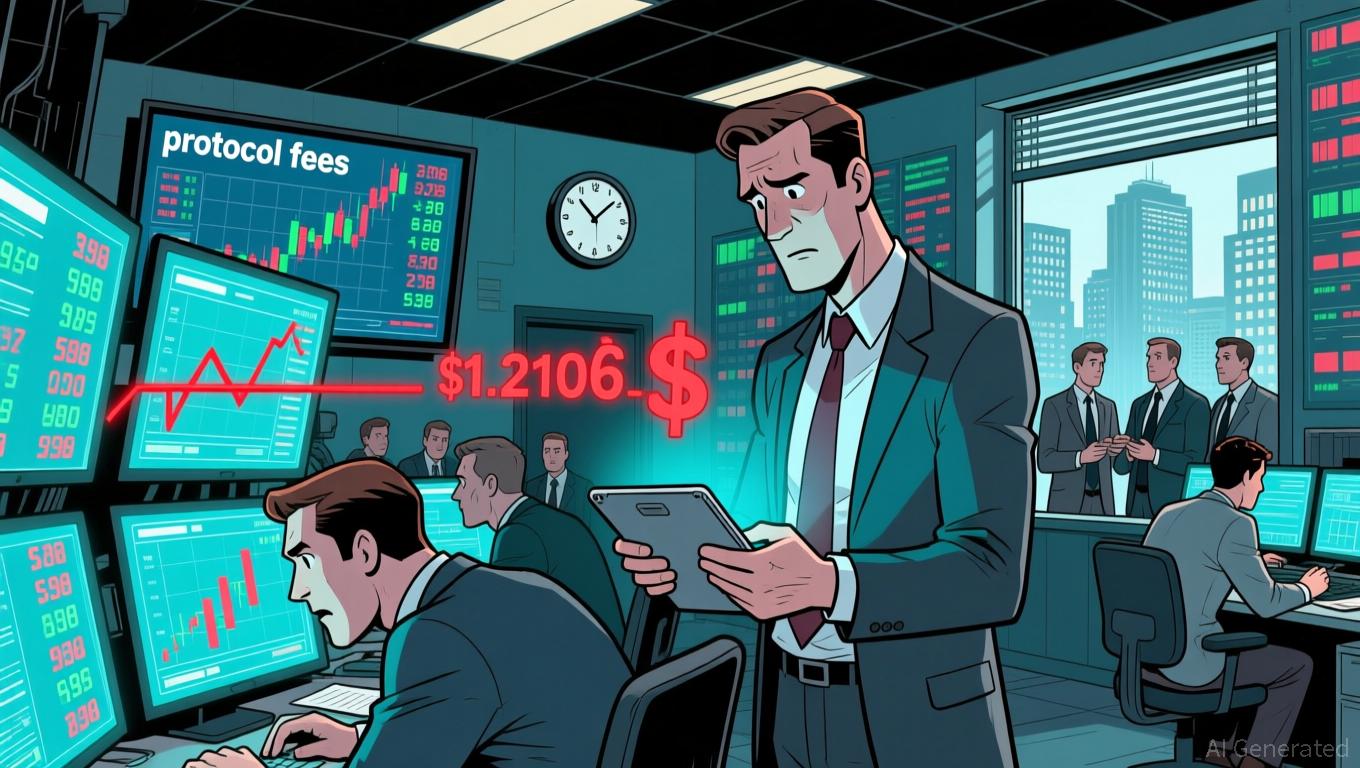LUNA Drops 12.63% Over the Past Month as Market Fluctuates
- LUNA rose 0.87% in 24 hours but fell 5.01% over 7 days and 12.63% in a month, reflecting persistent downward pressure. - Market caution persists as technical indicators show short-term bullish signals but long-term bearish trends, complicating recovery prospects. - Backtesting revealed mixed post-10% decline recovery patterns, with 60-day average returns slightly positive but high volatility and variable optimal holding periods.
As of NOV 16 2025,
Although LUNA experienced a small price rise in the last 24 hours, this has not led to sustained
Technical analysis of LUNA’s price trends reveals a complex picture. While some short-term indicators have shown brief bullish signals, the longer-term outlook remains negative. This contrast could suggest a phase of consolidation or possibly a reversal in the asset’s direction. Still, without new catalysts or significant changes in market conditions, it remains uncertain if a lasting recovery is imminent.
Backtest Hypothesis
In light of LUNA’s recent trends, a backtesting study was performed to explore possible investment strategies. The hypothesis focused on LUNA’s behavior after experiencing a monthly drop of 10% or more. The analysis identified every occurrence since January 1, 2022, where LUNA’s price fell by at least 10% over a month. Using these dates, a backtesting tool was used to measure post-event performance, including average returns, hit rates, best holding periods, and drawdown statistics.
The results showed that following a monthly decline of 10% or greater, LUNA’s recovery has historically been inconsistent. Some periods saw partial rebounds, while others continued to decline for several more months. The average return over the 60 days after such events was slightly positive but highly variable. The hit rate—meaning the proportion of times returns were positive during this window—was moderate, indicating that LUNA’s short-term recovery after major drops is unpredictable.
The best holding periods differed, with some cases yielding better results after 30 days and others after 60 days. Drawdown data highlighted the asset’s volatility, with some losses quickly recovered and others taking months to reverse. These results suggest that while a 10% monthly drop does not always signal a prolonged downturn for LUNA, it does mark a period where investors should exercise increased caution and reconsider their strategies.
Disclaimer: The content of this article solely reflects the author's opinion and does not represent the platform in any capacity. This article is not intended to serve as a reference for making investment decisions.
You may also like
DASH surges 30.39% over the past week amid strategic growth moves and positive analyst revisions
- DoorDash's DASH stock fell 10.59% in 24 hours but surged 30.39% in 7 days, driven by a strategic Old Navy partnership expanding retail delivery services. - Acquisitions of Deliveroo and autonomous delivery partnerships with Coco Robotics, plus $10.72B revenue and 49.2% gross margin, strengthened market leadership. - Analysts raised price targets to $260 with "Outperform" ratings, citing growth potential despite a high 98.1 P/E ratio reflecting market optimism. - Technical analysis shows bullish reversal
Aster News Today: Optimism Faces Prudence: ASTER Approaches $1.21 Following RSI CEO's 16% Stake Sale
- Aster (ASTER) rose 8% toward $1.21 as Binance-backed DEX hit $3T in cumulative trading volume. - RSI CEO sold 16% stake ($11M+), raising doubts despite Q2 revenue growth (19.7%) and EPS beat. - ASTER faces mixed signals: bullish triangle pattern vs. declining fees, 50% open interest drop, and stagnant adoption. - Analysts remain divided: RSI's 22% YTD gain contrasts with ASTER's uncertain breakout potential amid waning trader enthusiasm.

The ChainOpera AI Token Crash: An Urgent Warning for Cryptocurrency Projects Powered by AI
- ChainOpera AI's COAI token collapsed 96% in late 2025, exposing systemic risks in AI-driven DeFi ecosystems. - Centralized governance (10 wallets controlled 87.9% supply) and misaligned incentives exacerbated panic selling during crises. - Technical flaws included untested AI models with 270% increased vulnerabilities and inadequate smart contract security audits. - Regulatory shifts like the GENIUS Act compounded liquidity challenges, highlighting the need for compliance-ready AI crypto projects. - Inve

How large a portion of the AI data center surge will rely on renewable energy sources?